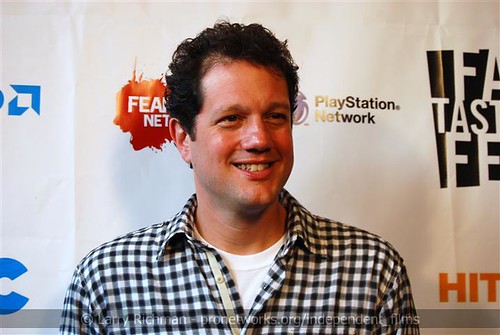Contributors's blog
A Sneak Peek at '1: The Unvarnished Story'
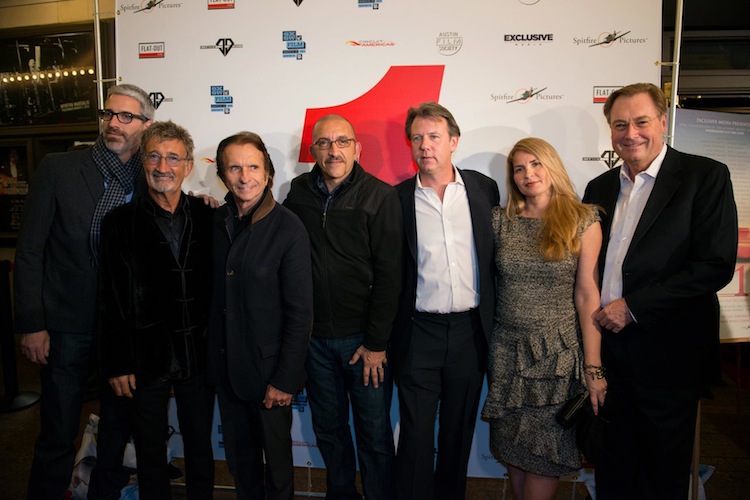
By Susan LaMarca
A local sneak peek of the documentary 1: The Unvarnished Story helped kick off the 2012 Formula One US Grand Prix in Austin on November 15. The red carpet included former drivers Emerson Fittipaldi, Jackie Stewart and Brett Lunger, plus Bernie Ecclestone, President and CEO of F1 Management and F1 Administration.
1 is an account of Formula One from the 1960s and 1970s, culled from thousands of hours of archival footage and contemporary interviews with 60 drivers and professionals. During those years, television audiences and sponsors brought business to motor racing as advancements in technology and engineering increased the performance of race cars. These decades marked the most dangerous period in the history of the sport, and many drivers were killed due to lack of safety regulations.
Producer Michael Shevloff introduced director Paul Crowder (Riding Giants, Dogtown and Z Boys) and writer Mark Monroe before the screening. After working on the project for three years in the making, the filmmakers expressed excitement at the opportunity to screen the film during Austin's Formula One weekend. They were also thrilled to announce that the final version of the movie would be narrated by Michael Fassbender.
Skater Flashbacks, T-Shirts, and 'Bones Brigade: An Autobiography'
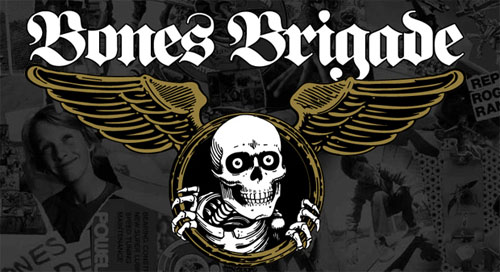
By Ashley Harkrider
Tony Hawk, Steve Caballero, Mike McGill, Rodney Mullen, Lance Mountain ... Even non-skateboarders will recognize some of these names. The impact they had on skateboarding in the 1980s made them household names, rock stars of sorts, and legitimized skateboarding as both an art and a sport. They were a group of kids, some as young as twelve, formed into an elite team by Stacy Peralta, who had partnered with George Powell to form Powell-Peralta Skateboards. The team became known as the Bones Brigade.
When I was 12 years old, I saw an ad in the back of a magazine to "join" the Bones Brigade. After a long day of begging, my mother relented and soon the mailman delivered a box with my official membership card and the greatest t-shirt I had ever seen. It had all-over print featuring the board logo designs from every single rider and a large "Member: Bones Brigade '89" on the back. They were my heroes, and I was now a part of them in my young eyes. Long story short, I spent the next 10 years of my life doing everything I could to be just like my heroes. I may not have achieved those dreams, but in watching Bones Brigade: An Autobiography and hearing both Rodney Mullen and Lance Mountain speak in person after the film, I couldn't help but find myself feeling the same rush I once did. I believe that everyone who experienced the rise of the Bones Brigade will never forget the effect it had on us all.
AFS Film Club Creates the Perfect Haunted House
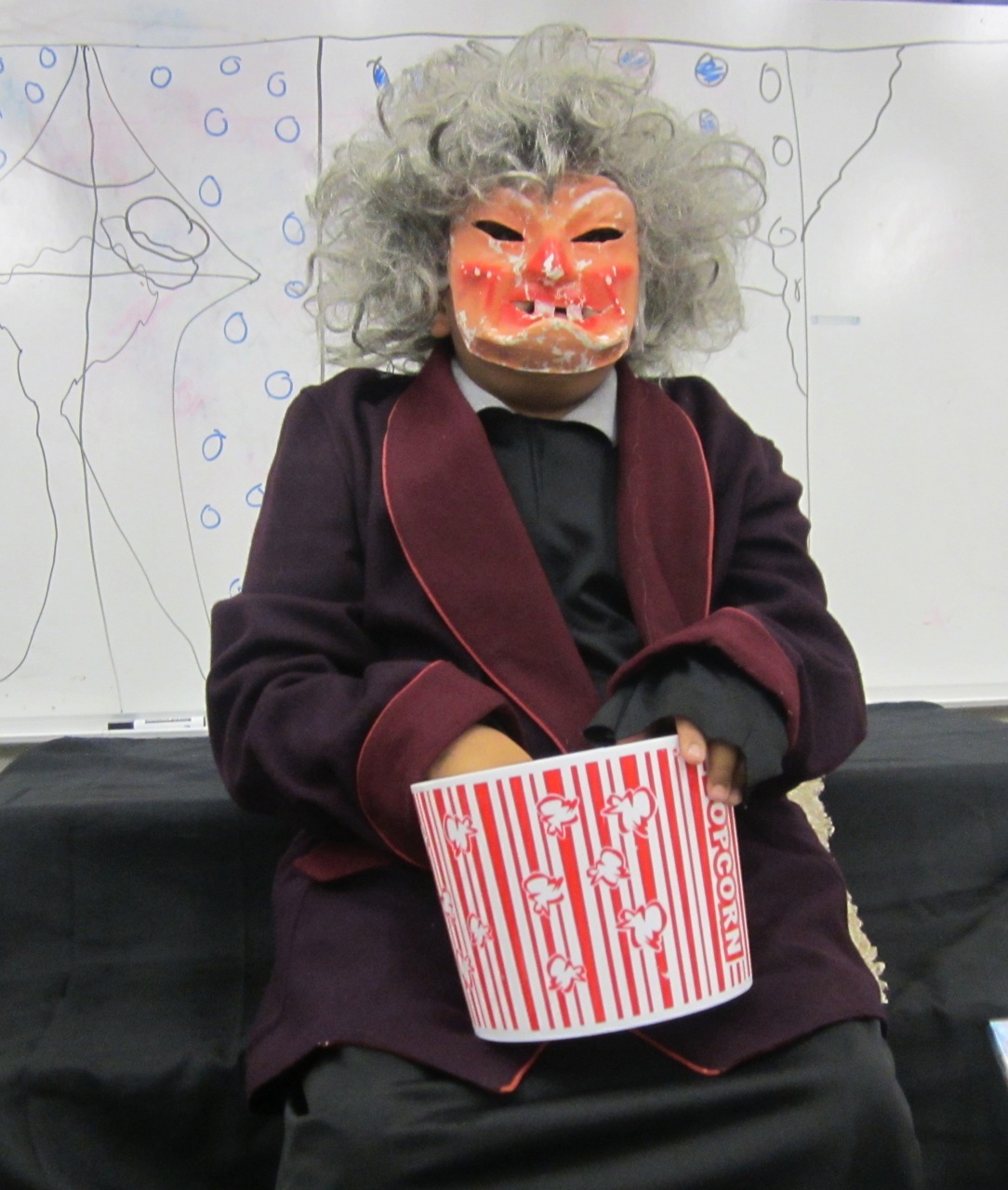
By Ayshea Khan
While my stomach has finally recovered from the Halloween sugar overdose, I'm still reveling in the eerie magic that occurred at Mendez Middle School two weeks ago. The students in the Austin Film Society's after-school Film and Game Club program brought a haunted house to life through the principles of game design, filmmaking and theater arts.
Last summer, in partnership with the AMD Foundation's Changing the Game initiative and AISD's ACE Afterschool, the AFS Film Club began to delve into the realm of videogame design with the Digital Media Magic pilot program. The three-week workshop was offered to students from both Martin and Mendez Middle Schools to keep them thinking creatively about media production outside of school time. AFS was able to extend the transmedia curriculum into the school year with the AFS Film and Game Club at Mendez Middle School co-taught by myself and Lora-Jean Garza, the school's theater arts instructor, teaching both the art and technology of the two media.
I was excited to have the opportunity to be an AFS Filmmaking Mentor at Mendez and couldn't wait to get started. Lora-Jean and I both wanted to think outside the box for something particularly creepy and fun to engage our students during the pre-Halloween months. Well, what would be more fun than creating a haunted house in the school auditorium? Plus, a haunted house is the perfect project to build while learning the tools and techniques of game design and filmmaking.
Here's how we did it: We started the semester introducing students to game design through the online gaming resource Gamestar Mechanic. Alongside that, we did simple forms of animation including flipbooks and thaumatropes to provide students with a historical context of the computer animation they would use in the process. Some of the most important concepts a young digital media maker must learn are the five elements of game design: space, rules, components, mechanics and goals. (See AFS Community Education Manager Katy Daiger Dial's look at these elements through a film lens.) To bring these elements into a more physical space, students were tasked with creating their own board games that replicated the maze-like aspects of a haunted house.
Lights. Camera. Help. A Night at Austin's Nonprofit Film Festival
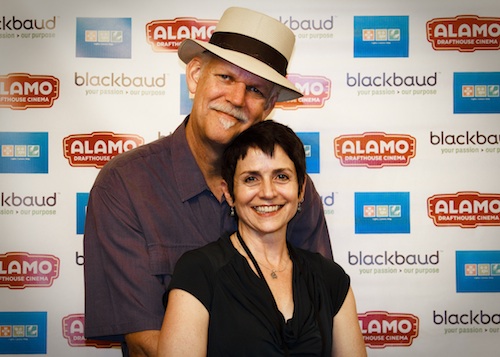
by Stefan Gill
On September 14, at the Scottish Rite Theater, a few dozen film denizens gathered for the final night of the Lights. Camera. Help. film festival under a very inauspicious mood. The rain, ever rare in the dry Austin atmosphere, began its weekend-long parade, which only highlighted another strange occurrence -- an unrealized bomb threat at UT, which cleared the campus of its 50,000+ students. So on the final night of the 4th annual nonprofit-themed fest, which focuses on the good and triumph of humanity, there were many examples to counter such statements of good.
But any idea of giving into the negative was wiped away by the keynote address by Turk Pipkin, an actor who became a filmmaker with a heart for the humanitarian world. Noticeably tall and vocal, it is quickly obvious that he puts his passion for the good of humanity first, and his life as a filmmaker is motivated by that passion.
Pipkin highlighted his work with The Nobelity Project, the organization he founded to work with Nobel laureates and other humanitarian groups to promote their work with film and art and to create new opportunities. The YouTube page for Nobelity contains dozens of films, two of which Turk showed to the audience: 1000 Books for Hope - Join the Club, a about a donation drive to give books to five schools in Kenya; and Replant the Park, about the Bastrop fires and how Nobelity has fostered a youth tree-planting project in the area, which is embedded below for you to watch.
In Conversation with Spike Lee: A Special Evening
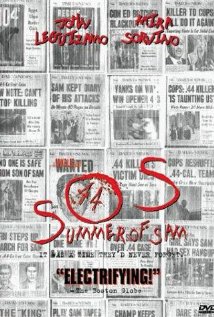 By John Elder
By John Elder
Do you have a film that is special to you? Not necessarily a favorite film, or even a film you would consider to be good. I'm talking about a film that you have a soft spot for. No matter the reason, this is a movie that is close to you, and you're close to it. You can identify with something about it. It hurts a tad to hear someone criticize it. It might be a guilty pleasure, but that's only half way there, because a guilty pleasure isn't necessarily special.
On Saturday September 8, I was fortunate enough to be at The Paramount for their "In Conversation" series. This installment featured Spike Lee and his 1999 film Summer of Sam. It was an event I'd had on my radar for a few months and had been eagerly awaiting. To see the director of Do The Right Thing in person giving a talk about one of his films, no matter how routine or rehearsed, had me in great anticipation.
Here's the Paramount Theatre's pitch: "Join us for an intimate interview with Spike Lee followed by a screening of Summer of Sam." I figured we'd get some very general questions with some very general answers to go with them. Preceding the prepared Q&A, we'd get some prepared remarks on Summer of Sam recited like a daily routine. Even if this was a routine gig for Spike Lee, I was still excited to be graced with Lee's presence.
Let me just say that I was pleasantly surprised. I now know why Summer of Sam is a very special film to Spike Lee (besides the fact that he made it). After hearing from Lee himself, that he wanted Sam to be "loud and full of colors," I now know what his guilty pleasure is, too. Summer of Sam is Lee's dramatization of the Son of Sam murders in Brooklyn during 1977. There is plenty of graphic violence, sex, and drugs to go around as we follow the lives of several eccentric characters in a closely-knit Brooklyn neighborhood. The film is loud and colorful, and its certainly not for the faint of heart, of which I saw a few leaving the theater a couple murders or expletives in.
Local Filmmakers Demonstrate the Benefits of Making Shorts
By Whitney Pyterek
The Austin Film Society hosts a Moviemaker Dialogue about once a month and from me to Austin filmmakers, you must go! "Short Filmmakers Bridging the Gap to Features" included filmmakers David Zellner, Clay Liford, Kat Candler and Kelly Williams. Moderator Holly Herrick, the AFS Associate Artistic Director, did a fabulous job getting the panelists to talk about their craft.
I am not a filmmaker myself, but I definitely left feeling like it was possible to make it in the industry if I ever got enough courage to jump in. There was a good balance in opinion between the four panelists. However, everyone said that you must make short films if you have any aspiration of making a feature film and you have to put just as much energy into a feature film as you would any short film and vice versa.
Eldrich Abominations Abound for Lovecraft Double Feature
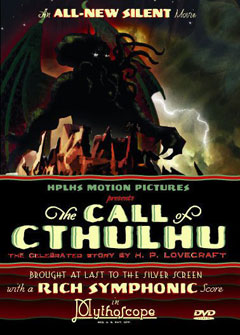 by Julian Singleton
by Julian Singleton
The stars were finally right at the Austin Film Society screening room on August 29 for a special double-feature screening of The Call Of Cthulu and The Whisper In Darkness. The two films, based on select works of renowned "weird fiction" author H.P. Lovecraft, were brought to the fore under the AFS Avant Cinema banner by the H.P. Lovecraft Historical Society, which dedicates itself to modern appreciation of the late author's work.
Both films are rooted in the extensive mythos that Lovecraft and his successors cultivated through endless collections of short fiction published in pulp magazines and anthologies, beginning in the early 1920s. The premise of Lovecraft's universe was that the cosmos is secretly under the control of the Old Gods, a supreme race of beings that held humanity's fate within its clutches. Those who happened to stumble upon this revelation were faced with either madness, death or worse -- inescapable, crippling sanity.
Such protagonists populate the two movies screened at the retrospective. The Call Of Cthulu features a man who recounts his discovery of a cosmic conspiracy involving an ocean-dwelling God and the unfortunate cast of characters who were influenced by its power. The Whisper In Darkness, on the other hand, follows a professor of folklore goaded into debunking the tales of mysterious creatures populating the New England hillside ... only to discover that these tales are all too true.
'The Incredibles' with Composer Michael Giacchino
By Lishann Johnson
The main reason I was excited to go to Alamo Drafthouse's recent screening of The Incredibles, aside for my love for the movie, was the chance to meet and participate in the Q&A with composer Michael Giacchino (jee-a-kee-no). It was a great experience to listen to Giacchino talk. The Q&A, moderated by Austin composer Brian Satterwhite, happened before the movie, which I really enjoyed. In my opinion, having to wait until the end of the film to talk to the guest is not necessary when the movie is as popular and memorable as The Incredibles.
This was Giacchino's first feature film, before he started composing for video games (the Call Of Duty and Medal of Honor series) and television (Alias and Lost). I would say he hit a home run on his first feature score.
Giacchino told the audience how he came to work on The Incredibles; his friend Teddy Newton introduced him to director Brad Bird. Like all stories in Hollywood, it had its ups and downs. The upside (besides getting the job) was when he was asked to take a couple of the scenes home to score them, the downside was having to wait a week to find out if he had gotten the job, and then being told by Bird that his music had the potential to ruin the movie if he got it wrong. Ultimately I think anyone who has seen The Incredibles would agree that the movie was only enhanced by his jazzy heroic themes.
Doc Night Provides a Look Inside the Life of an Artist
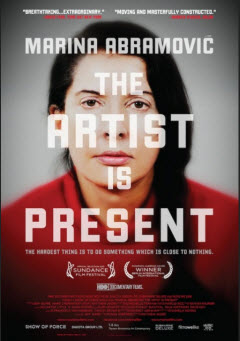 By Olivia Calderon-Stucky
By Olivia Calderon-Stucky
Recently at the Alamo Drafthouse on South Lamar, Austin had its first-ever viewing of Marina Abramovic: The Artist Is Present as part of the Austin Film Society's monthly Doc Nights. The film's Austin premiere featured director Matthew Akers in attendance. He was in Austin to serve on this year's Texas Filmmakers' Production Fund jury.
Beginning with her retrospective show at the MoMA in 2010, Marina Abramovic: The Artist Is Present intimately captures Abramovic's world from the hectic months leading up to the show to its final bittersweet night. Along the way, audiences glimpse pieces of the artist: from her manifesto delivered to an Italian audience to her past life with fellow artist and collaborator Uwe Laysiepen, who also appeared in the documentary for a sort of engineered once-lovers' reunion. The movie is as fearless and provocative as the artist herself and I left the theatre feeling the full weight of the emotionally charged experience.
"Marina seduces everyone she meets," explains the curator of her MoMA show, and I agreed with the thought. I felt wholly taken with her as a person and as the artist with her aura. For her opus of a show, Abramovic became the exhibit, sitting for more than seven hours every day for three months in the museum. The space looked like a film set and viewers would sit in front of Abramovic, as she held them in her unwavering gaze. Through this process the public became unquestionably, inescapably part of the piece.
Abramovic exhibited her enviable drive and stamina. In Marina Abramovic: The Artist Is Present, she says an artist "must be a warrior and must conquer new territory ... himself ... his weaknesses ... This is my cross to bear." Certainly she is an iconoclastic figure of late 20th century art. Her performance pieces caused many to question her sanity, as the works often involved graphic and violent bodily threatening acts. Now in her 60s, Abramovic explains that she is tired of being "alternative" and wants respect. As she was trying to make herself and her work accessible to everyone, what better way than Akers' filming to add an extra layer to this endeavor.
Reel One: Sprocket Society Flickers to Life at the Ritz
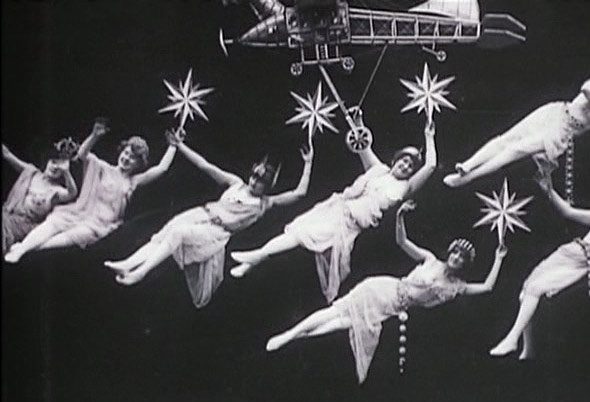 By Stefan Gill
By Stefan Gill
On a toasty August Sunday, a group of film fans filled the small second theater at Alamo Drafthouse Ritz to experience the premiere of what is sure to be another great Alamo tradition: the Sprocket Society. The concept is as old as the movies (or at least, as old as the movies shown in the theater that day): projecting rare films in their intended format.
Tommy Swenson, the mastermind of the wonderful Drafthouse pre-shows -- which both make fun of and glorify the film the audience paid to see -- brought this idea from his backyard, where with the help of a 16mm projector he collected and showed actual film prints to friends, both to display the beauty of original formats and to empower film lovers to pay it forward and discover buried film treasures on their own.
The goal of the Sprocket Society is as raw as the prints on display: For the first screening, several short programs of varying types and decades were projected, including a Flash Gordon serial, an 8mm documentary on an African tribe dangerously building a bridge (the first film Werner Herzog ever saw), a rare Western filmed in San Antonio and directed by Georges Melies' brother Gaston Melies, and the trippiest (and most mysterious) student film ever made, Omega.



